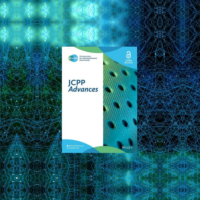Useful Resources
Understanding working memory, a classroom guide
Professor Susan E. Gathercole and Dr Tracy Packiam Alloway
https://www.mrc-cbu.cam.ac.uk/wp-content/uploads/2013/01/WM-classroom-guide.pdf
Sources
Cortese, S, Ferrin, M, Brandeis, D. et al. (2015) Cognitive Training for Attention-Deficit/Hyperactivity Disorder: Meta-Analysis of Clinical and Neuropsychological Outcomes From Randomized Controlled Trials. J Am Acad Child Adolesc Psychiatry. 2015 Mar; 54(3): 164–174. doi: 10.1016/j.jaac.2014.12.010. Available at: https://www.ncbi.nlm.nih.gov/pmc/articles/PMC4382075/ [accessed 19 May 2017]
Danielsson, H, Zottarel, V, Palmqvist, L et al. (2015) The effectiveness of working memory training with individuals with intellectual disabilities – a meta-analytic review. Front Psychol. 6: 1230. doi: 10.3389/fpsyg.2015.01230 Available at: https://www.ncbi.nlm.nih.gov/pmc/articles/PMC4538918/#B35 [accessed 24 May 2017]
Gathercole, S. E. Alloway, T. P. (2006), Practitioner Review: Short-term and working memory impairments in neurodevelopmental disorders: diagnosis and remedial support. J Child Psychol Psychiatr, , 47: 4–15. doi:10.1111/j.1469-7610.2005.01446.x Available at: http://onlinelibrary.wiley.com/doi/10.1111/j.1469-7610.2005.01446.x/full [accessed 19 May 2017]
Gathercole, S. E. (2014), Commentary: Working memory training and ADHD – where does its potential lie? Reflections on Chacko et al. (2014). J Child Psychol Psychiatr, 55: 256–257. doi:10.1111/jcpp.12196 Available at: http://onlinelibrary.wiley.com/doi/10.1111/jcpp.12196/full [accessed 19 May 2017]
Chacko, A., Bedard, A.C., Marks, D.J. et al. (2014), A randomized clinical trial of Cogmed Working Memory Training in school-age children with ADHD: a replication in a diverse sample using a control condition. J Child Psychol Psychiatr, 55: 247–255. doi:10.1111/jcpp.12146 Available at: http://onlinelibrary.wiley.com/doi/10.1111/jcpp.12146/full [accessed 24 May 2017]
Janneke C. A. W. Peijnenborgh, Petra M. Hurks et al. (2016) Efficacy of working memory training in children and adolescents with learning disabilities: A review study and meta-analysis. Neuropsychological Rehabilitation, 26:5-6, 645-672, DOI: 10.1080/09602011.2015.1026356 Available at: http://www.tandfonline.com/doi/abs/10.1080/09602011.2015.1026356 [accessed 24 May 2017]
Cristea, I. A., Kok, R. N., & Cuijpers, P. (2015). Efficacy of cognitive bias modification interventions in anxiety and depression: meta-analysis. The British Journal of Psychiatry, 206, 7-16. Available at: http://bjp.rcpsych.org/content/206/1/7.long [accessed 17 May 2017]
Cristea, I. A., Mogoașe, C., David, D. et al.(2015), Practitioner Review: Cognitive bias modification for mental health problems in children and adolescents: a meta-analysis. J Child Psychol Psychiatr, 56: 723–734. doi:10.1111/jcpp.12383 Available at: http://onlinelibrary.wiley.com/doi/10.1111/jcpp.12383/abstract [accessed 24 May 2017]
Mental Elf link: https://www.nationalelfservice.net/treatment/psychotherapy/limited-benefits-of-cognitive-bias-modification-for-adolescents-is-it-time-to-move-on
Reynolds, S. (2015) Cognitive bias modification for anxiety and depression in children and adolescents. The Mental Elf. Available at: https://www.nationalelfservice.net/treatment/psychotherapy/cognitive-bias-modification-for-anxiety-and-depression-in-children-and-adolescents/, [accessed 24 May 2017]
Lothmann, C., Holmes, E. A., Chan, S. W.Y. et al. (2011), Cognitive bias modification training in adolescents: effects on interpretation biases and mood. J Child Psychol Psychiatr, , 52: 24–32. doi: 10.1111/j.1469-7610.2010.02286.x Available at: http://onlinelibrary.wiley.com/wol1/doi/10.1111/j.1469-7610.2010.02286.x/full [accessed 24 May 2017]
Chan, S. W.Y., Lau, J. Y.F, Reynolds, S. A. (2015), Is cognitive bias modification training truly beneficial for adolescents? J Child Psychol Psychiatr, 56: 1239–1248. doi:10.1111/jcpp.12368 Available at: http://onlinelibrary.wiley.com/doi/10.1111/jcpp.12368/abstract [accessed 24 May 2017]
Lau, J. Y. F. (2015) Commentary: A glass half full or half empty? Cognitive bias modification for mental health problems in children and adolescents – reflections on the meta-analysis by Cristea et al. (2015). J Child Psychol Psychiatr, 56: 735–737. doi:10.1111/jcpp.12436 Available at: http://onlinelibrary.wiley.com/doi/10.1111/jcpp.12436/full [accessed 24 May 2017]
Bar-Haim, Y. (2010) Research Review: attention bias modification (ABM): a novel treatment for anxiety disorders. J Child Psychol Psychiatr, , 51: 859–870. doi: 10.1111/j.1469-7610.2010.02251.x Available at: http://onlinelibrary.wiley.com/wol1/doi/10.1111/j.1469-7610.2010.02251.x/full [accessed 24 May 2017]
LeMoult, J., Joormann, J., Kircanski, K et al. (2016) Attentional bias training in girls at risk for depression. J Child Psychol Psychiatr, 57: 1326–1333. doi:10.1111/jcpp.12587 Available at: http://onlinelibrary.wiley.com/doi/10.1111/jcpp.12587/full [accessed 24 May 2017]
Lowther H, Newman E. (2014) Attention bias modification (ABM) as a treatment for child and adolescent anxiety: a systematic review. J Affect Disord. Oct;168:125-35. doi: 10.1016/j.jad.2014.06.051. Epub 2014 Jul 5. Available at: http://www.jad-journal.com/article/S0165-0327(14)00419-4/fulltext, [accessed 24 May 2017]
SüB H.M, Oberauer K, Wittmann W.W, et al. (2002) Working-memory capacity explains reasoning ability – and a little bit more. Intelligence 20:261-288. Available at: https://pdfs.semanticscholar.org/cd24/fe814883b0540e0454ce4d91915cbef574f7.pdf [accessed 16 June 2017]
Conway A.R, Cowan N, Bunting M.F. (2001) The cocktail party phenomenon revisited: the importance of working memory capacity. Psychon Bull Rev 8:331-335. Available at: https://pdfs.semanticscholar.org/a2f5/839f29c4939e65f0b86cb536839db3aaeece.pdf [accessed 16 June 2017]
Martinussen R, Hayden J, Hogg-Johnson S, et al. (2005) A meta-analysis of working memory impairments in children with attention-deficit/hyperactivity disorder. J Am Acad Child Adolesc Psychiatry 44:377-384. Available at: http://www.sciencedirect.com/science/article/pii/S0890856709614891 [accessed 16 June 2017]
Constantinidis, C, Klingberg, T (2016) The neuroscience of working memory capacity and training. Nat Rev Neurosci. 2016 Jul;17(7):438-49. doi: 10.1038/nrn.2016.43. Available at: https://www.nature.com/nrn/journal/v17/n7/full/nrn.2016.43.html [accessed 16 June 2017]
Klingberg, T et al. (2005) Computerized Training of Working Memory in Children With ADHD-A Randomized, Controlled Trial. Journal of the American Academy of Child & Adolescent Psychiatry 44 (2) 177 – 186. Available at: http://www.jaacap.com/article/S0890-8567(09)61427-1/fulltext [accessed 16 June 2017]
Green, C. T., Long, D. L., Green, D. et al. (2012). Will Working Memory Training Generalize to Improve Off-Task Behavior in Children with Attention-Deficit/Hyperactivity Disorder? Neurotherapeutics, 9(3), 639–648. http://doi.org/10.1007/s13311-012-0124-y. Available at: https://www.ncbi.nlm.nih.gov/pmc/articles/PMC3441930/ [accessed 16 June 2017]
Bigorra, A., Garolera, M., Guijarro, S. et al. (2016) Long-term far-transfer effects of working memory training in children with ADHD: a randomized controlled trial. Eur Child Adolesc Psychiatry 25: 853. doi:10.1007/s00787-015-0804-3. Available at: https://link.springer.com/article/10.1007%2Fs00787-015-0804-3 [accessed 16 June 2017]
Spencer-Smith, M., & Klingberg, T. (2015). Benefits of a Working Memory Training Program for Inattention in Daily Life: A Systematic Review and Meta-Analysis. PLoS ONE, 10(3), e0119522. http://doi.org/10.1371/journal.pone.0119522 Available at: https://www.ncbi.nlm.nih.gov/pmc/articles/PMC4368783/ [accessed 15 June 2018]
Kirsch I, Deacon B, Huedo-Medina T, et al. (2008) Initial severity and antidepressant benefits: a meta-analysis of data submitted to the food and drug administration. PloSMedicine. 5: e45 doi: 10.1371/journal.pmed.0050045. Available at: https://www.ncbi.nlm.nih.gov/pmc/articles/PMC2253608/ [accessed 15 June 2018]
 Cognitive training approaches are used as interventions for conditions such as ADHD, anxiety and depression, as well as learning disabilities.
Cognitive training approaches are used as interventions for conditions such as ADHD, anxiety and depression, as well as learning disabilities.


